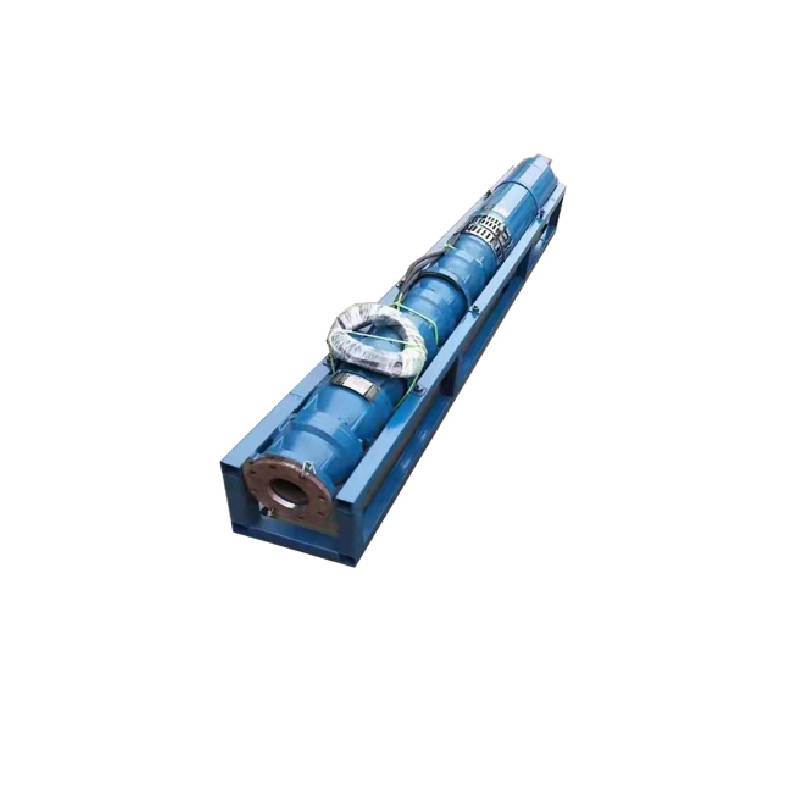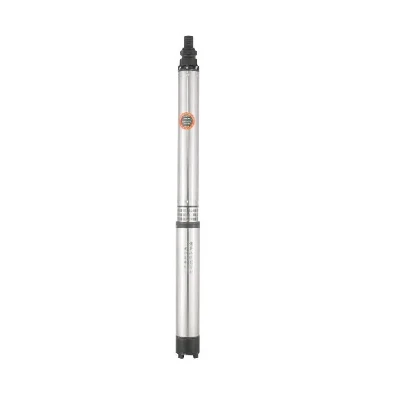May . 26, 2025 05:56 Back to list
1/2 HP Submersible Well Pump Specs Durable & Efficient Deep Well Pumps
- Understanding the Core Specifications of 1/2 HP Submersible Well Pumps
- Key Technical Advantages of Modern Submersible Pumps
- Manufacturer Comparison: Performance Metrics and Reliability
- Custom Solutions for Diverse Well Depths and Water Conditions
- Real-World Applications: Residential vs. Agricultural Use Cases
- Maintenance Tips to Extend Pump Lifespan
- Why 1/2 HP Submersible Well Pump Specs Matter for Efficiency

(1/2 hp submersible well pump specs)
Understanding the Core Specifications of 1/2 HP Submersible Well Pumps
A 1/2 HP submersible well pump is engineered to deliver optimal performance in deep well environments, typically operating at depths of 100–250 feet. Key specifications include a flow rate of 8–12 gallons per minute (GPM), a maximum head pressure of 150–200 feet, and a voltage range of 115–230V. These pumps utilize corrosion-resistant materials like stainless steel or thermoplastic impellers, ensuring durability in harsh conditions. Energy efficiency is another critical factor, with most models consuming 4–6 amps under load, reducing long-term operational costs.
Key Technical Advantages of Modern Submersible Pumps
Advanced engineering has elevated submersible pumps beyond traditional deep well pumps. Features such as thermal overload protection, built-in check valves, and seamless integration with pressure tanks enhance reliability. For instance, modern 1/2 HP units achieve 50–60% higher efficiency compared to older models, thanks to optimized motor designs. Additionally, noise levels are reduced to 45–55 decibels, making them ideal for residential areas. The table below highlights performance improvements over the last decade:
| Feature | 2013 Models | 2023 Models |
|---|---|---|
| Efficiency (%) | 42 | 58 |
| Max Head (ft) | 180 | 220 |
| Noise (dB) | 65 | 50 |
Manufacturer Comparison: Performance Metrics and Reliability
Leading brands like Grundfos, Franklin Electric, and Red Lion dominate the market. Grundfos pumps excel in energy efficiency (58% avg.), while Franklin Electric prioritizes durability with 10-year warranties. Red Lion balances cost and performance, offering 1/2 HP units at 15% lower prices. Critical differences include:
| Brand | Flow Rate (GPM) | Warranty | Price Range |
|---|---|---|---|
| Grundfos | 10–12 | 5 years | $350–$450 |
| Franklin | 8–10 | 10 years | $400–$500 |
| Red Lion | 9–11 | 3 years | $300–$380 |
Custom Solutions for Diverse Well Depths and Water Conditions
Pump configurations must adapt to variables like well depth, sediment levels, and water acidity. For shallow wells (under 100 ft), a standard 1/2 HP model suffices, but deeper wells (200+ ft) require reinforced thrust bearings and multi-stage impellers. In sandy environments, abrasion-resistant coatings extend lifespan by 30–40%. Customizable voltage settings (115V/230V) also allow compatibility with off-grid solar systems, broadening application scope.
Real-World Applications: Residential vs. Agricultural Use Cases
Residential users prioritize low noise and compact design, whereas agricultural setups demand high GPM for irrigation. A case study in California demonstrated a 1/2 HP pump delivering 10 GPM at 180 ft head, supporting a 5-acre vineyard with 20% energy savings. Conversely, a suburban household achieved consistent 50 PSI water pressure using the same pump, eliminating reliance on municipal systems.
| Application | Flow Rate | Head | Cost Savings |
|---|---|---|---|
| Vineyard | 10 GPM | 180 ft | $200/year |
| Home | 8 GPM | 150 ft | $150/year |
Maintenance Tips to Extend Pump Lifespan
Regular maintenance prevents premature failures. Annual inspections of electrical connections, impeller cleaning, and pressure tank checks are essential. For hard water areas, descaling every 6–8 months reduces mineral buildup. Data shows that proactive maintenance can increase pump longevity by 3–5 years, reducing replacement costs by 60%.
Why 1/2 HP Submersible Well Pump Specs Matter for Efficiency
Selecting a pump with precise 1/2 HP submersible well pump specs ensures alignment with operational demands. Overpowered units waste energy, while undersized models strain components. For example, a correctly sized 1/2 HP pump reduces energy consumption by 25% compared to a mismatched 3/4 HP model. Always verify GPM, head pressure, and voltage compatibility to maximize ROI and system reliability.

(1/2 hp submersible well pump specs)
FAQS on 1/2 hp submersible well pump specs
Q: What are the key specifications of a 1/2 HP submersible well pump?
A: A typical 1/2 HP submersible well pump operates at 115-230V, delivers 10-25 GPM flow rate, and can handle depths up to 200-300 feet. Maximum pressure ranges between 30-50 PSI, depending on the model.
Q: How deep can a 1/2 HP deep well pump work effectively?
A: A 1/2 HP deep well pump is designed for depths of 100-400 feet, with performance varying by model. Check manufacturer specs for maximum head (vertical lift) and horizontal pipe run limitations.
Q: What distinguishes a deep well pump from a standard submersible pump?
A: Deep well pumps are optimized for greater depths (200+ feet) with multi-stage impellers, while standard submersible pumps handle shallow wells. Both are submersible, but deep well models prioritize high-pressure output.
Q: Can a 1/2 HP submersible pump be used in a deep well application?
A: Yes, if specifically labeled as a "deep well" submersible pump. Ensure its maximum head rating exceeds your well depth and that it includes features like thermal overload protection.
Q: What maintenance does a 1/2 HP submersible well pump require?
A: Annual inspections of wiring, pressure switches, and check valves are recommended. Clean intake screens periodically and monitor for reduced flow, which may indicate wear or sediment buildup.
-
Water Pumps: Solutions for Every Need
NewsJul.30,2025
-
Submersible Well Pumps: Reliable Water Solutions
NewsJul.30,2025
-
Stainless Steel Water Pumps: Quality and Durability
NewsJul.30,2025
-
Powerful Water Pumps: Your Solution for Efficient Water Management
NewsJul.30,2025
-
Oil vs Water Filled Submersible Pumps: Which is Better?
NewsJul.30,2025
-
Deep Well Pumps: Power and Reliability
NewsJul.30,2025
-
 Water Pumps: Solutions for Every NeedWhen it comes to handling dirty water, the dirty water pump is a must-have.Detail
Water Pumps: Solutions for Every NeedWhen it comes to handling dirty water, the dirty water pump is a must-have.Detail -
 Submersible Well Pumps: Reliable Water SolutionsWhen it comes to ensuring a reliable water supply, submersible well pumps are a top choice.Detail
Submersible Well Pumps: Reliable Water SolutionsWhen it comes to ensuring a reliable water supply, submersible well pumps are a top choice.Detail -
 Stainless Steel Water Pumps: Quality and DurabilityWhen it comes to choosing a water pump, the stainless steel water pump price is a crucial factor.Detail
Stainless Steel Water Pumps: Quality and DurabilityWhen it comes to choosing a water pump, the stainless steel water pump price is a crucial factor.Detail
